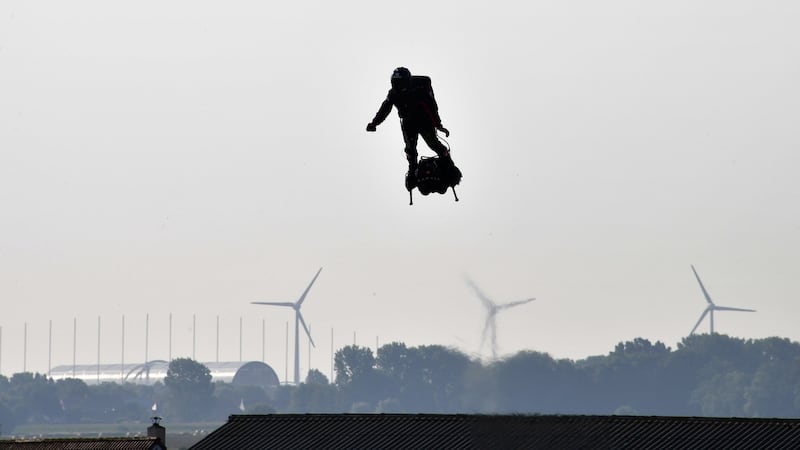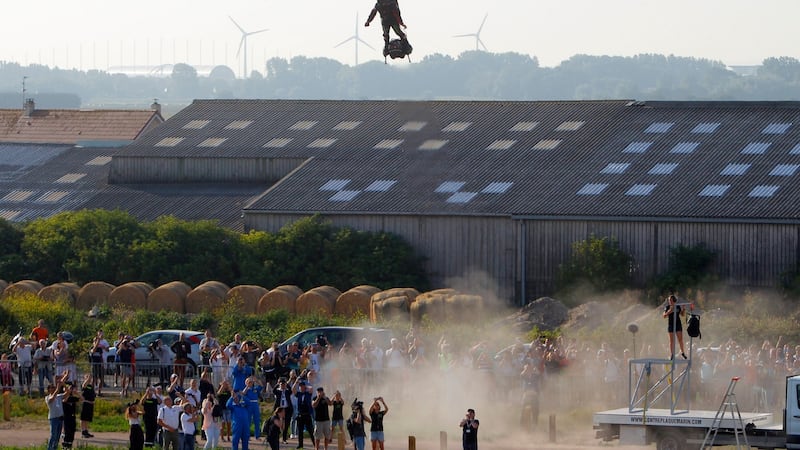A French inventor failed in his attempt to cross the English Channel on a jet-powered hoverboard on Thursday when he was knocked into the water as he landed on a boat-mounted refuelling platform, his technical team said.
Franky Zapata lifted off near the northern port of Calais with 42 litres of kerosene in his backpack, enough for about 10 minutes of flight.
He planned to strap on a new backpack on a vessel waiting midway across the 35-km wide Strait of Dover.

"It is a huge disappointment. He made his rendezvous with the refuelling boat, but the landing platform hit the flyboard, which threw him off balance and knocked him into the water," support crew member Stephane Denis told BFM television.
Zapata was making his attempt on the 110th anniversary of the first powered flight between Britain and France.
But Denis said that with the landing platform two meters above the deck, every movement of the ship on the waves was exaggerated, making landing difficult.

“He had practiced this manoeuvre in heavier seas without problems, but now, at the most important moment, it failed. Today was the 110th anniversary of Bleriot’s flight. It would have been a poignant moment,” Denis said.
He added that Zapata was unharmed and would make a new attempt as soon as possible.
Zapata had received a €1.3 million grant from the French army in late 2018 to help finance the development of the hoverboard, which is powered by five small jet engines.

Zapata took off from Sangatte, France, at 7.06am. Flying at up to 140km/h at an altitude of between 15 to 20 metres he had hoped to reach to Dover in about 20 minutes.
He disappeared from spectators’ view within moments, trailed by a helicopter, but minutes later his team announced the attempt had failed.
Zapata had wowed crowds during France's July 14th Bastille Day celebrations, flying over a military parade on Paris' Place de la Concorde in the presence of French president Emmanuel Macron and German Chancellor Angela Merkel.
On July 25th, 1909, Frenchman Louis Bleriot became the first man to fly across the Channel in an airplane. Since then, Channel crossings have become a rite of passage for all kinds of new aircraft.
Zapata, a champion on jetski-powered waterboards, steers his craft by leaning forward or backward and controls thrust with a throttle connected to his 1,500 horsepower board.











